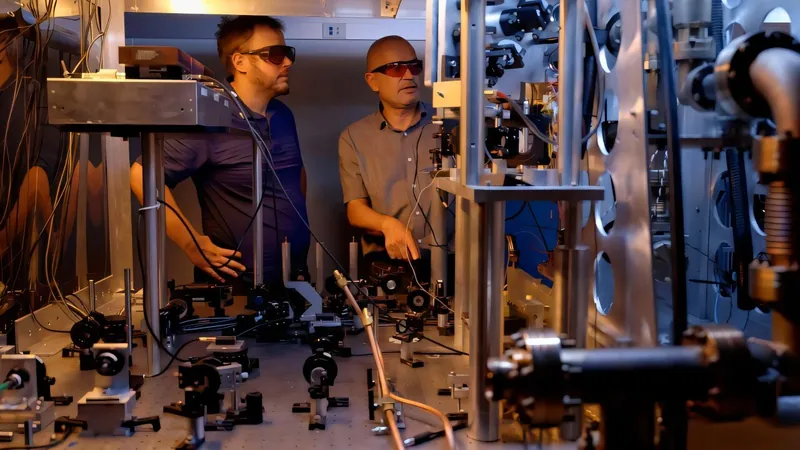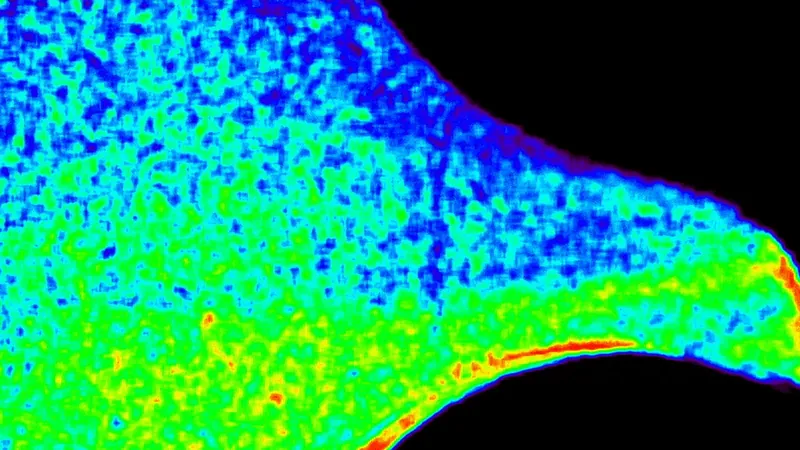
Meet NIST-F4: The Revolutionary Atomic Clock That's Changing Timekeeping Forever!
2025-04-28
Author: Mei
Get ready to say goodbye to timekeeping as you know it! The National Institute of Standards and Technology (NIST) in Boulder, Colorado, has just unveiled NIST-F4, a groundbreaking atomic clock that's joining the ranks of the world's most precise timekeepers.
This state-of-the-art clock has made headlines after NIST researchers announced its impressive accuracy in a recent publication in Metrologia. Not only that, but it’s also on its way to being recognized as a primary frequency standard by the International Bureau of Weights and Measures (BIPM) — the global authority on time.
What Makes NIST-F4 Tick?
NIST-F4 operates on the unchanging frequency of cesium atoms, the gold standard for measuring the second since 1967. Its innovative 'fountain' design allows it to tick so consistently that if it had started 100 million years ago, it would only be off by less than a second today! This lets it join an elite group of atomic clocks operated by just ten countries worldwide.
This incredible technology is essential for global timekeeping. NIST-F4 supports the U.S. time standard by delivering official time via radio and the internet, which is crucial for everything from telecommunications to financial transactions.
The Science Behind the Clock!
At its core, NIST-F4 is a cesium fountain clock—an advanced atomic clock that harnesses the power of cesium atoms to generate precise timing signals. These clocks are the bedrock of our interconnected world, helping to calibrate Coordinated Universal Time (UTC), the universal standard for time.
Here’s how it works: thousands of cesium atoms are first cooled to near absolute zero using lasers. Once they’re at this extreme temperature, laser beams toss the atoms upwards, and as they fall back down, they interact with microwave radiation, transitioning through a quantum state that beats in sync with the cesium resonant frequency.
With meticulous measurements, the clock can then count 9,192,631,770 wave cycles of microwaves in just one second—defining the international second. But here’s the twist: the definition of the second may evolve by 2030 to encompass newer optical clocks that measure time with even greater precision.
A Triumph Years in the Making!
Creating NIST-F4 was no small feat; it involved years of painstaking effort. NIST's first fountain clock, NIST-F1, was built in the late 1990s and ran successfully for over 15 years. But after relocating in 2016, it required extensive restoration.
Leading physicist Vladislav Gerginov and his team decided to rebuild the clock’s microwave cavity from scratch to enhance its precision. The result? NIST-F4, which operates with tolerances smaller than a human hair!
These incredible scientists conducted months of tests to ensure that NIST-F4 was impervious to environmental disturbances, and it has now achieved frequency measurements accurate up to 2.2 parts in 10 to the 16th, making it one of the most precise atomic clocks on the planet!
A New Era Begins!
NIST-F4, along with its sibling NIST-F3, operates around 90% of the time. Data from this clock will continuously help update UTC, reinforcing NIST's authority in the arena of global timekeeping.
"The success of NIST-F4 has renewed NIST's global leadership in primary frequency standards," said Liz Donley of NIST, celebrating the achievement. With this revolutionary atomic clock, the future of timekeeping looks brighter than ever!


 Brasil (PT)
Brasil (PT)
 Canada (EN)
Canada (EN)
 Chile (ES)
Chile (ES)
 Česko (CS)
Česko (CS)
 대한민국 (KO)
대한민국 (KO)
 España (ES)
España (ES)
 France (FR)
France (FR)
 Hong Kong (EN)
Hong Kong (EN)
 Italia (IT)
Italia (IT)
 日本 (JA)
日本 (JA)
 Magyarország (HU)
Magyarország (HU)
 Norge (NO)
Norge (NO)
 Polska (PL)
Polska (PL)
 Schweiz (DE)
Schweiz (DE)
 Singapore (EN)
Singapore (EN)
 Sverige (SV)
Sverige (SV)
 Suomi (FI)
Suomi (FI)
 Türkiye (TR)
Türkiye (TR)
 الإمارات العربية المتحدة (AR)
الإمارات العربية المتحدة (AR)